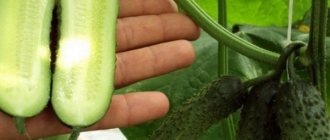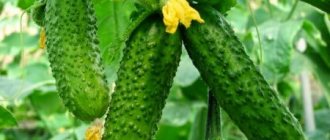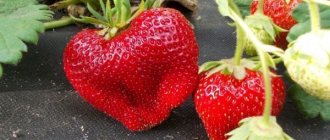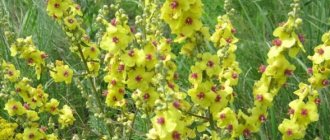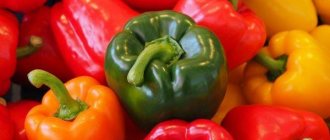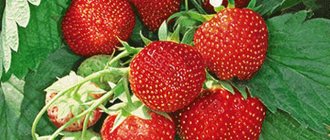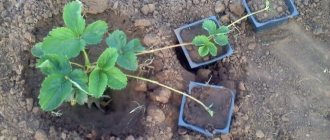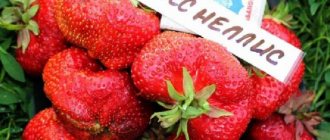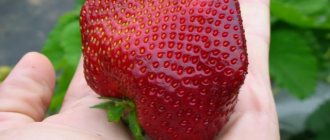Small-fruited garden strawberries, also called alpine strawberries, are not inferior in taste and aroma to wild berries. Particularly popular among gardeners are remontant strawberries, which make it possible to harvest from the beginning of summer until the end of autumn.
Most varieties of remontant small-fruited strawberries are borerless, which greatly facilitates the care of plantings. Long-term fruiting, unpretentiousness, compactness, high decorative and taste qualities of strawberries will be appreciated even by the most “lazy” summer residents who only occasionally visit their garden plot.
The article presents the most popular and productive varieties of small-fruited strawberries, which can take their rightful place both in the flower garden and in the vegetable garden.
Holiday
| Berry weight | Maturation period | Bush height | Productivity |
| 5-7 g | June-October | 25-30 cm | Up to 1 kg per bush |
A productive, late-ripening, winter-hardy, beardless variety. Holiday strawberries prefer open, sunny areas and form beautiful lush bushes that can decorate any flower bed. They can also be planted as a border along paths. The berries are light yellow, medium-sized, egg-shaped, very aromatic, sweet, and have excellent taste.
Abundant fruiting of small-fruited garden strawberries lasts on average about 3–4 years. Then the bushes need to be rejuvenated by growing new plants from seeds or dividing the mother bush. Sunny areas with nutritious and loose soil are suitable for planting strawberries.
Small-fruited garden strawberries look spectacular not only in the garden beds, but also in the house and on the balcony. This unpretentious crop can be successfully grown in containers and hanging pots. But with this method of growing, do not forget about regular feeding and watering.
Source
Strawberries: variety of species and great confusion
There are many varieties of this plant. What variations does this perennial herbaceous plant include? Today the following types of strawberries are known: Chilean, Virginia, forest, green, nutmeg (musk), pineapple. All of them belong to the Pink family. They are often confused by calling strawberries strawberries and vice versa, but these beautiful plants are united by one common Latin name Fragária, translated from Latin - fragrant, fragrant. It is for this property of emitting an unusually pleasant smell, as well as due to its extraordinary taste, that this berry is loved. Look at the article about varieties of garden strawberries with detailed characteristics.
Rhine Waltz
| Berry weight | Maturation period | Bush height | Productivity |
| 2-4 g | End of May-October | 15-20 cm | 500-600 g per bush |
An early ripening variety that is excellent for central Russia. Flowering begins in May and continues until frost. The berries are small, bright red, with delicate, sweet and aromatic pulp. The taste is reminiscent of wild strawberries, suitable for fresh consumption, for decorating desserts and baked goods, for freezing and making jam.
Ruyana
| Berry weight | Maturation period | Bush height | Productivity |
| 6-g | End of June-October | 20-25 cm | Up to 1 kg per bush |
High-yielding mid-season variety of Czech selection. The bushes are tall, medium leafy. The inflorescences rise above the greenery and do not touch the ground. The oblong-conical berries have a pleasant, balanced taste and aroma reminiscent of wild strawberries. The density of the fruit is medium, the pulp is juicy and pink. Ruyana strawberries bear fruit abundantly for four years in one place. The plants are drought-resistant, are not affected by gray rot, and tolerate wintering well.
Rügen
| Berry weight | Maturation period | Bush height | Productivity |
| 3-5 g | Early June-October | 20-25 cm | Up to 1 kg per bush |
An early productive variety of German selection. Rügen strawberry bushes are dense and compact. The rich red berries have a pleasant aroma and sweet taste. Excellent for fresh consumption and any processing. The pulp of the berries is yellowish-white. The conical fruits reach a length of 3 cm.
Reviews
Every year, many summer residents begin to grow new varieties of various crops on their plots. The leading position among the new products in the garden beds is confidently occupied by remontant strawberries. Taking into account its description and reviews from gardeners, you can choose exactly those options that will grow and develop as efficiently as possible in the conditions of each specific area.
Nina, Simferopol:
“For several seasons in a row I have been growing Albion. Every year it is sweet, aromatic and tasty. Last fall I collected the last ones in November. It tolerates transportation well from the dacha and is practically not damaged during transportation. It is clear that for industrial designs this criterion is one of the most important. For me, when choosing, this moment also became decisive. I usually take care of the beds, without any innovations or secrets.”
Vitaly, Bryansk:
“I consider Brighton my favorite among remontant strawberries. Beautiful, productive, suitable for transportation, grows a mustache well. Like all similar types, it requires periodic updating. I decided for myself that the best harvest and continuity of fruiting are possible when planting “3 through 3”. In the first year I plant 3 rows of new seedlings and leave 3 from the previous one, the next year I don’t touch the new ones. I remove the older ones. This combination, in my opinion, is the most optimal, since the bed always looks alive and not depleted.”
Baron Solemacher
| Berry weight | Maturation period | Bush height | Productivity |
| 4-5 g | June-October | 20 cm | 400-600 per bush |
The variety is a German selection, obtained back in the 30s of the 20th century, but still does not lose popularity. Suitable for growing in various climatic zones of Russia. The bushes are powerful, spreading, and tolerate dry periods and cold winters well, withstanding frosts down to 30°C. Sweet berries with dense, juicy pulp can be stored at 1-3°C for a week. They bear fruit well in one place for 3-4 years, then you need to start a new bed.
Varieties
Despite the fact that the crop was bred to grow in warm climates, today it is grown throughout the country. The main characteristics of remontant strawberries are:
- productivity;
- mass of berries;
- pulp (the denser, the longer the fruits are stored);
- taste (the best are dessert and table varieties);
- substance content (the less acid and more sugar, the higher the grade is rated);
- purpose (dessert - for fresh consumption, table - the berries can be eaten fresh and canned, universal - for processing, fresh consumption, canning).
Domestic
There are still few such varieties, but their number is increasing every year. The quality of domestic remontants is not inferior to imported ones. The best types:
- Garland. It ripens early: the first harvest is harvested in early June. The bushes are spherical, of medium density, and have a decorative appearance. The garland is characterized by moderate growth, the plant vines are not long, green-pinkish. The berries are conical in shape, without a neck, bright red in color, and have a shiny surface. The pulp is light, very juicy, aromatic and tender. The yield per plant is 1 kg, with the average weight of the fruit being 26–32 g. The taste of the Garland is highly rated, its purpose is dessert. The advantages are large fruit, winter hardiness, drought resistance, and productivity. The disadvantages of Garland are its susceptibility to fungal diseases in rainy weather. Without good care, the fruits will be small and not very tasty.
- Elizabeth 2. Fruitful, erect, low-growing, strong bushes with a semi-spreading and dense head of foliage. The tendrils are actively formed and bloom quickly, the lashes are medium in size. The berries of Elizabeth 2 are very large, oval in shape, without flaws. They are characterized by a bright red color, ribbing and tuberosity. The bushes are constantly covered with flowers, ovaries and fruits. The taste depends on agricultural technology: with proper care it is highly rated. One plant produces about 0.6 kg. The weight of each berry is 60–90 g. The pulp is dense, juicy, sweet with sourness, and has a rich aroma. The purpose of Elizabeth 2 is dessert. The advantages of the species are a long growing season (up to 5 harvests are harvested), large fruit, good storage and transportation capabilities. The disadvantages of Elizabeth 2 are wateriness and loss of sweetness during rains or with heavy watering.
- Yoke. It begins to bear fruit in the first ten days of June. Coquette bushes are semi-spreading, densely covered with foliage. Strawberries develop without tendrils and produce conical berries on massive stalks. The berry has a bright orange-red color and a shiny surface. In the sun the fruits turn dark red. The taste qualities of Coquette are high: the berries are very sweet, with a wonderful aroma, juicy and tender pulp. The vitamin C content in them is 65 mg/%!, sugar – 9%! Productivity is about 270–300 g per bush, the average fruit weight is 17–23 g. The advantages of Coquette are winter hardiness, high quality fruit, and immunity to disease. Disadvantages: poor tolerance to dry weather, susceptible to strawberry mites.
- Crimean remontant. The erect bushes are densely covered with pale red leaves and tendrils. White flowers are located below the leaves. The stalks are thin, so they fall quickly when the berries are poured. Crimean remontant strawberries produce red, wide-obtuse conical fruits with the maximum amount of ascorbic acid in their composition. The variety bears fruit twice - in April-May (in the south) and August-September. In the northern regions, the first harvest is harvested a month later. The crop is durable, can grow in one place for up to 6 years, and the yield is not reduced. The yield of Crimean remontant is about 180 g per plant. The average weight of the berry varies from 6.5–30 g, the flesh is tender, juicy, and pink. Crimean remontant has a good taste, contains 6% sugar, 1.2% acid and 86.9% vitamin C. The advantages of the culture are drought and frost resistance, immunity to most pathologies and pests. Disadvantages: unevenness, different sizes of fruits. With insufficient watering, strawberries become smaller.
- Lyubasha. The early species ripens for the first time in early June. Lyubasha bushes are powerful, spreading, generously covered with medium-sized foliage with pubescence. The plant does not produce tendrils, blooms with white buds, and has thick stalks. The berry is very sweet, with a large percentage of ascorbic acid in its composition (82 mg/%!). The fruits are conical, red in color. The average yield of Lyubasha is 170 g per bush, while the weight of each fruit is 12–23 g. The taste of the variety is excellent: the pulp is sweet (12% sugar), with a pronounced aroma. The advantages of Lyubasha are winter and heat resistance, tolerance to drought, and resistance to disease. Disadvantage: weakness to the strawberry mite.
- Autumn fun. In the middle zone it produces two harvests in one season. A bed covered with film will ensure fruit production until October. In the southern territory there may be three waves of fruiting. Autumn fun is a medium-sized, semi-spreading bush with moderate arborization. It produces sweet, small berries weighing up to 20 g. The fruits have juicy pink flesh with a fresh taste. The advantages of Autumn Fun are resistance to nematodes, strawberry mites, and fungal diseases. Disadvantage: small fruit.
- How to grow strawberries at home
- Strawberry beds - how to make multi-tiered, smart, tall or warm ones with your own hands
- Growing strawberries in a greenhouse all year round - equipment, technology in bags, PVC pipes and containers
European
All the best varieties of remontant strawberries of foreign selection are sold in Russia. European types of crops are less winter-hardy than domestic ones, and therefore there are many attacks in the spring, but the varietal plot does not freeze completely. Popular foreign varieties include:
- Albion. Covered with a thick foliage, it is heat-resistant and tolerates drought well, growing well in the southern regions. During the summer, Albion produces three harvests: in May, June and September. The fruits are dark red, large, have a glossy shine on the surface, a regular conical shape with a pronounced strawberry aroma. The berries are oblong in shape, resembling a carrot. About 0.5–0.6 kg of strawberries are removed from each bush. The pulp of Albion is dense, excellent taste - very sweet. The advantage of the species is immunity to most diseases, the disadvantages are its unsuitability for conditions of mid-latitude, insufficient frost and winter hardiness.
- Vima Rina. A remontant variety of Dutch selection, it is a semi-spreading plant with a powerful structure and a large number of light green leaves. The antennae are formed passively and are green in color. Vima Rin berries are red, large, conical in shape, have a neck, and when poured quickly fall to the ground. The yield of the variety is 140 g per bush. Strawberries are very tender, juicy, aromatic, have a sweet and sour taste and dense pulp. It contains 8.3% sugar! The advantages of Wine Rina are heat resistance, drought tolerance, and good transportability. Disadvantages: relatively low yield, poor winter hardiness.
- Brighton. A large-fruited remontant crop of late fruiting is a medium-sized bush with medium-sized rounded leaves. Peduncles rise to the level of the upper leaves. Regardless of the length of daylight, strawberries multiply quickly, forming a large number of tendrils in a short time. Brighton strawberries are large-fruited, tasty, have a rich red color and a beautiful glossy surface. The yield of the variety is 2–2.5 kg per bush, and it is designed for continuous fruiting for 10 months. The advantage of Brighton is that it is practically not affected by fungal diseases; in addition, it is characterized by increased transportability, large fruit (40–50 g) and immunity to common ailments. The disadvantage of the culture is weakness in the face of frost.
- Tribute. The remontant variety is a day-neutral variety, so it bears fruit normally even in regions with short sunny days. It has a powerful structure and forms many antennae. Tribute berries have an average weight of 20–25 g, round shape, dark red color and sweet and sour taste. They are distinguished by their sweet taste and light aroma of wild strawberries. The yield of the crop is high - about 0.5 kg is harvested from one plant. The advantages of the remontant variety are winter hardiness, resistance to root and gray rot, verticillium, and common pests.
- Ostara. It belongs to the proven types of remontant strawberries, characterized by constant fruiting, since the set of berries does not depend on the length of daylight hours. Ostara is characterized by early fruiting and consistently high yields (up to 1.2 kg per bush). Low, compact plants reach a height of 25 cm. The crop produces its first harvest in early June, and the main fruiting occurs in August–September and continues until frost. The peculiarity of this remontant variety is the ability to produce crops on young bushes that grew from runners, separated from the mother plants and took root. Ostara fruits are cone-shaped, medium in size: during the first harvest they are large (about 75 g), and then gradually become smaller up to 15 g. The berries are bright red, with soft, delicate pulp, a smooth, glossy surface. The taste is sweet and sour, highly rated. The advantages of Ostara are a rich strawberry taste, abundant, continuous fruiting, and ease of care. In addition, the plant is resistant to fungi (except gray rot). The disadvantages of the variety are the rapid aging of the bushes (planting needs to be renewed every 2 years), smaller fruits, and poor transportability due to the softness of the berries.

